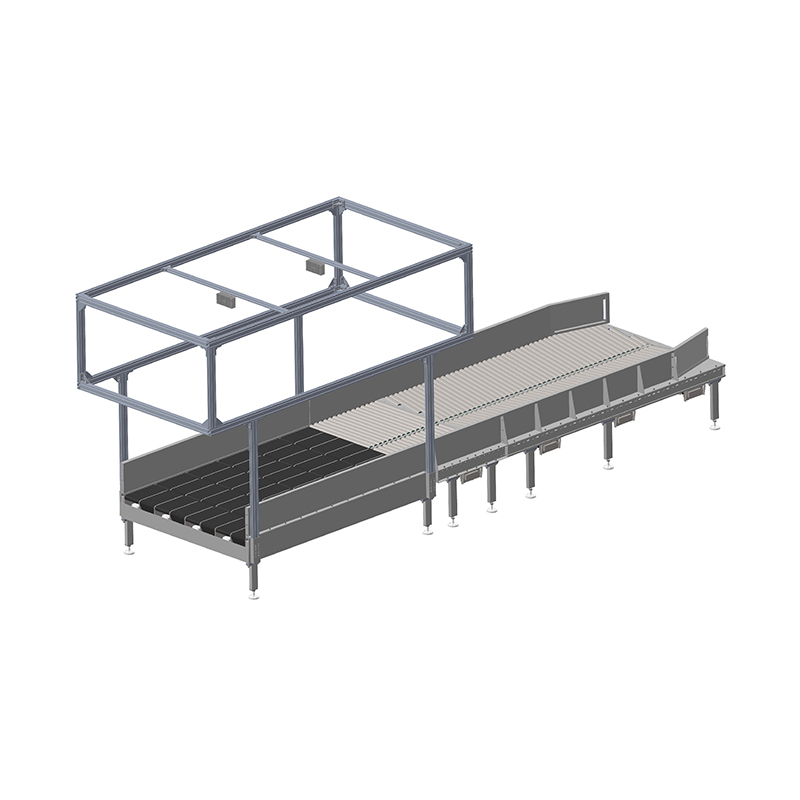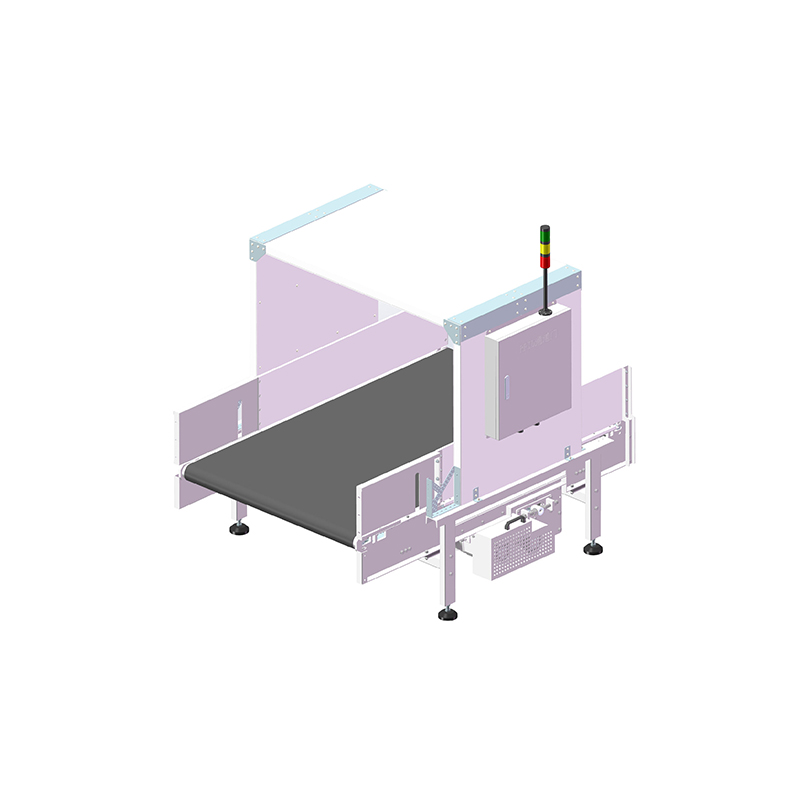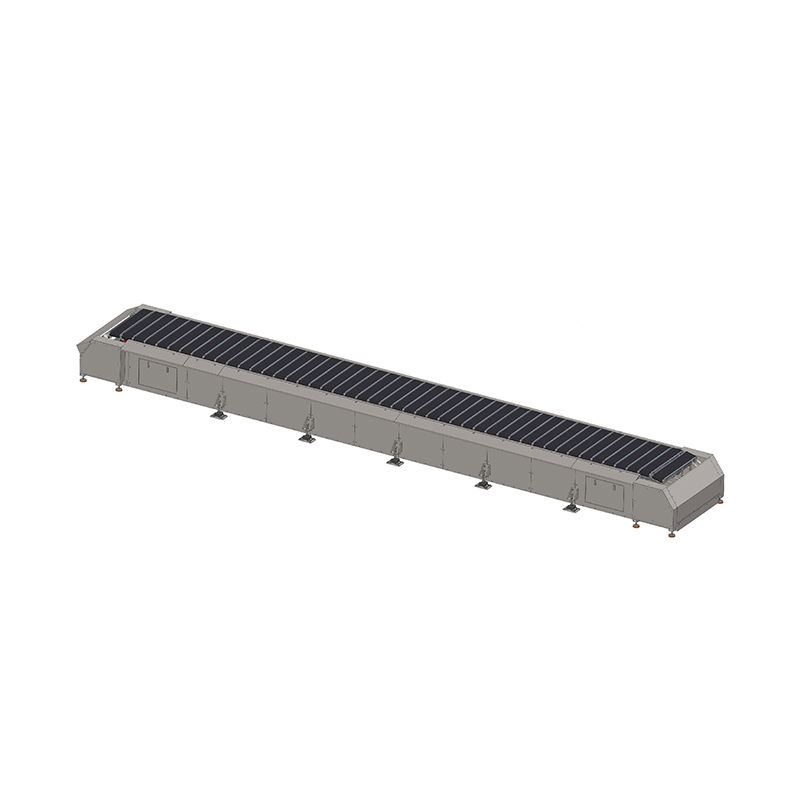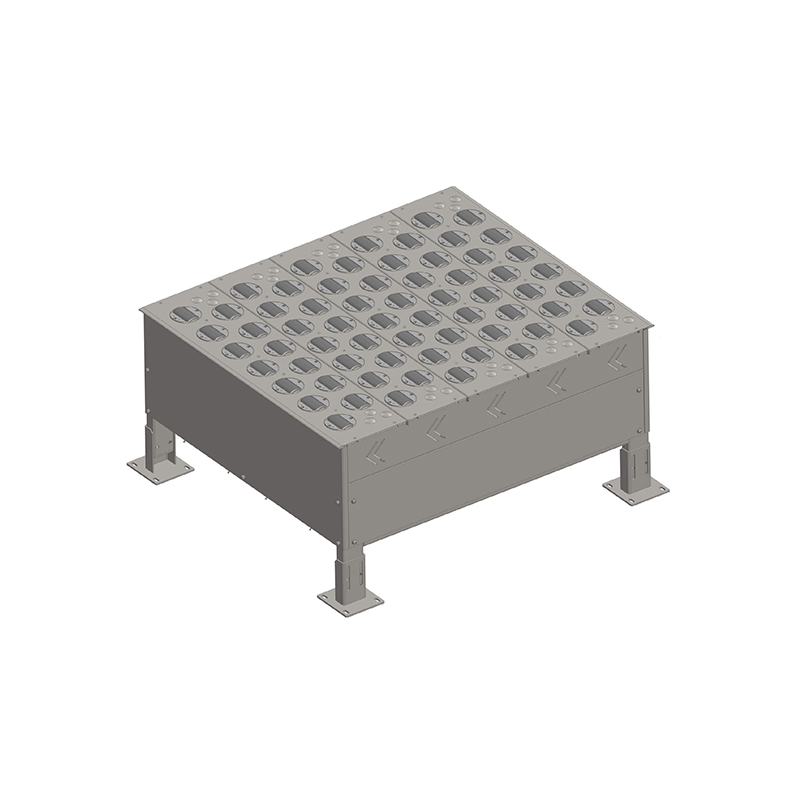What drives the soaring performance of direct-drive roller sorters? The answer lies in the mass production of balance wheels!
Release Time : 2025-08-04
Amid the logistics industry's intelligent transformation, direct-drive roller sorters, with their efficient and precise sorting capabilities, have become core equipment in modern logistics centers, e-commerce warehouses, and manufacturing production lines. The breakthrough in mass production of balance wheels, a key component, has not only redefined the performance boundaries of these sorters but also driven technological upgrades and cost optimization across the entire logistics equipment industry chain.
1. Balance Wheel: The "Dynamic Stabilizer" of Direct-Drive Roller Sorters
The core principle of direct-drive roller sorters is to divert items through the left-right oscillation of the roller, while the balance wheel bears the crucial responsibility of maintaining the dynamic balance of the roller system. In high-speed sorting scenarios, the roller must accelerate, swing, and brake within 0.5 seconds, placing stringent demands on the balance wheel's load capacity, friction coefficient, and response speed. For example, Zhongke Weizhi's cross-belt sorter can process 24,000 small parcels per hour at a mainline speed of 2.5m/s. Its balancing wheels must withstand dynamic loads exceeding 60kg/m² while ensuring an oscillation error of less than ±0.1°. This poses a dual challenge to the balancing wheel's manufacturing precision and material properties.
The breakthrough in mass production of balancing wheels is primarily reflected in the innovative application of materials science. For example, the Interroll MX025H sorter utilizes a high-strength polyurethane overcoat process combined with powder metallurgy magnet technology, resulting in a 300% increase in wheel wear resistance and a friction coefficient controlled between 0.15 and 0.2, reducing energy loss and preventing cargo slippage. Furthermore, the modular design concept allows for quick replacement of balancing wheels with different diameters, adapting to multiple line scenarios such as straight lines, curves, and merge/diverge traffic, significantly enhancing the equipment's flexibility.
2. The Technical Challenges Behind Mass Production: From Single-Point Breakthroughs to System Integration
Mass production of balance wheels isn't a simple matter of replication; it requires overcoming three major technical barriers: materials, processes, and controls. For example, a Dongguan company's R&D team, after three years of technical research, achieved the following breakthroughs:
Material Formula Optimization: Targeting the harsh operating conditions of logistics, such as dust and humidity, a special rubber formula with oil, acid, and alkali resistance was developed, extending the lifespan of the balance wheel from three years to eight years.
Precision Manufacturing: A five-axis machining center was introduced to control wheel concentricity error to within 0.02mm. Laser welding technology was used to ensure a connection strength of 2000N·m between the axle and the wheel body.
Intelligent Control System Integration: Deeply coupled with the direct-drive motor, embedded sensors monitor wheel temperature and vibration frequency in real time. A PID algorithm dynamically adjusts the drive torque, ensuring stable operation of the balance wheel even under full load.
These technological breakthroughs have directly contributed to improved mass production efficiency. For example, Shenzhen Zhongshun Intelligent uses an automated die-casting production line to reduce the production cycle of balance wheel housings from 120 seconds per piece to 45 seconds per piece, achieving a single-line daily production capacity of over 2,000 pieces while also reducing the defect rate from 5% to 0.3%.
3. Mass Production Effect: Reshaping the Logistics Equipment Industry Ecosystem
The large-scale production of balance wheels is triggering a chain reaction within the logistics equipment industry:
Cost Reduction: With the expansion of mass production, the unit price of balance wheels has dropped from thousands of yuan to hundreds of yuan, directly driving a 40% reduction in the purchase cost of direct-drive roller sorters. For example, the mass production of Valvoline Technology's DGDD67 direct-drive servo electric roller has reduced the overall energy consumption of the sorter by 15%, helping the customer achieve a return on investment within three years.
Expanding Application Scenarios: The emergence of cost-effective balance wheels has enabled small and medium-sized logistics companies to deploy automated sorting systems. For example, after adopting a narrow-band sorter, a cross-border e-commerce warehouse increased its sorting efficiency from 3,000 pieces/hour to 9,000 pieces/hour, reducing labor costs by 60%.
Collaborative Innovation in the Industry Chain: The mass production of balance wheels is forcing upstream material suppliers to upgrade their production lines. For example, magnesium alloy die-casting companies have introduced vacuum high-pressure casting technology, reducing wheel porosity from 0.8% to 0.2%, significantly improving product reliability. Meanwhile, downstream equipment integrators are exploring integrated "balance wheel + AI vision" solutions. These technologies automatically adjust swing parameters through real-time cargo shape recognition, further increasing sorting accuracy to 99.99%.
4. Future Outlook: The Intelligent Evolution of Balance Wheels
With the penetration of IoT and AI technologies, balance wheels are evolving from passive stabilization components to active sensing units. For example, the direct-drive joint module developed by Benmo Technology integrates a torque sensor into the balance wheel, providing real-time feedback on wheel force data, providing a basis for predictive maintenance of sorting machines. Furthermore, Gewa Transmission's grooved DC brushless electric roller, featuring V-grooves on the balance wheel surface and combined with a highly wear-resistant O-belt, increases transmission efficiency to 92% at high speeds while reducing noise by 10 decibels.
It's foreseeable that with continued breakthroughs in materials science, precision manufacturing, and intelligent control technologies, the mass production of balance wheels will drive direct-drive drum sorters toward greater efficiency, flexibility, and intelligence. In this revolution in logistics automation, balance wheels—a once-overlooked "small component"—are now driving efficiency leaps across the industry through mass production.
1. Balance Wheel: The "Dynamic Stabilizer" of Direct-Drive Roller Sorters
The core principle of direct-drive roller sorters is to divert items through the left-right oscillation of the roller, while the balance wheel bears the crucial responsibility of maintaining the dynamic balance of the roller system. In high-speed sorting scenarios, the roller must accelerate, swing, and brake within 0.5 seconds, placing stringent demands on the balance wheel's load capacity, friction coefficient, and response speed. For example, Zhongke Weizhi's cross-belt sorter can process 24,000 small parcels per hour at a mainline speed of 2.5m/s. Its balancing wheels must withstand dynamic loads exceeding 60kg/m² while ensuring an oscillation error of less than ±0.1°. This poses a dual challenge to the balancing wheel's manufacturing precision and material properties.
The breakthrough in mass production of balancing wheels is primarily reflected in the innovative application of materials science. For example, the Interroll MX025H sorter utilizes a high-strength polyurethane overcoat process combined with powder metallurgy magnet technology, resulting in a 300% increase in wheel wear resistance and a friction coefficient controlled between 0.15 and 0.2, reducing energy loss and preventing cargo slippage. Furthermore, the modular design concept allows for quick replacement of balancing wheels with different diameters, adapting to multiple line scenarios such as straight lines, curves, and merge/diverge traffic, significantly enhancing the equipment's flexibility.
2. The Technical Challenges Behind Mass Production: From Single-Point Breakthroughs to System Integration
Mass production of balance wheels isn't a simple matter of replication; it requires overcoming three major technical barriers: materials, processes, and controls. For example, a Dongguan company's R&D team, after three years of technical research, achieved the following breakthroughs:
Material Formula Optimization: Targeting the harsh operating conditions of logistics, such as dust and humidity, a special rubber formula with oil, acid, and alkali resistance was developed, extending the lifespan of the balance wheel from three years to eight years.
Precision Manufacturing: A five-axis machining center was introduced to control wheel concentricity error to within 0.02mm. Laser welding technology was used to ensure a connection strength of 2000N·m between the axle and the wheel body.
Intelligent Control System Integration: Deeply coupled with the direct-drive motor, embedded sensors monitor wheel temperature and vibration frequency in real time. A PID algorithm dynamically adjusts the drive torque, ensuring stable operation of the balance wheel even under full load.
These technological breakthroughs have directly contributed to improved mass production efficiency. For example, Shenzhen Zhongshun Intelligent uses an automated die-casting production line to reduce the production cycle of balance wheel housings from 120 seconds per piece to 45 seconds per piece, achieving a single-line daily production capacity of over 2,000 pieces while also reducing the defect rate from 5% to 0.3%.
3. Mass Production Effect: Reshaping the Logistics Equipment Industry Ecosystem
The large-scale production of balance wheels is triggering a chain reaction within the logistics equipment industry:
Cost Reduction: With the expansion of mass production, the unit price of balance wheels has dropped from thousands of yuan to hundreds of yuan, directly driving a 40% reduction in the purchase cost of direct-drive roller sorters. For example, the mass production of Valvoline Technology's DGDD67 direct-drive servo electric roller has reduced the overall energy consumption of the sorter by 15%, helping the customer achieve a return on investment within three years.
Expanding Application Scenarios: The emergence of cost-effective balance wheels has enabled small and medium-sized logistics companies to deploy automated sorting systems. For example, after adopting a narrow-band sorter, a cross-border e-commerce warehouse increased its sorting efficiency from 3,000 pieces/hour to 9,000 pieces/hour, reducing labor costs by 60%.
Collaborative Innovation in the Industry Chain: The mass production of balance wheels is forcing upstream material suppliers to upgrade their production lines. For example, magnesium alloy die-casting companies have introduced vacuum high-pressure casting technology, reducing wheel porosity from 0.8% to 0.2%, significantly improving product reliability. Meanwhile, downstream equipment integrators are exploring integrated "balance wheel + AI vision" solutions. These technologies automatically adjust swing parameters through real-time cargo shape recognition, further increasing sorting accuracy to 99.99%.
4. Future Outlook: The Intelligent Evolution of Balance Wheels
With the penetration of IoT and AI technologies, balance wheels are evolving from passive stabilization components to active sensing units. For example, the direct-drive joint module developed by Benmo Technology integrates a torque sensor into the balance wheel, providing real-time feedback on wheel force data, providing a basis for predictive maintenance of sorting machines. Furthermore, Gewa Transmission's grooved DC brushless electric roller, featuring V-grooves on the balance wheel surface and combined with a highly wear-resistant O-belt, increases transmission efficiency to 92% at high speeds while reducing noise by 10 decibels.
It's foreseeable that with continued breakthroughs in materials science, precision manufacturing, and intelligent control technologies, the mass production of balance wheels will drive direct-drive drum sorters toward greater efficiency, flexibility, and intelligence. In this revolution in logistics automation, balance wheels—a once-overlooked "small component"—are now driving efficiency leaps across the industry through mass production.








